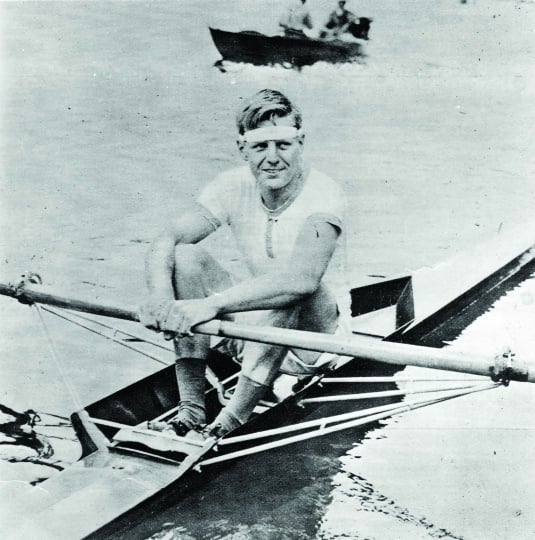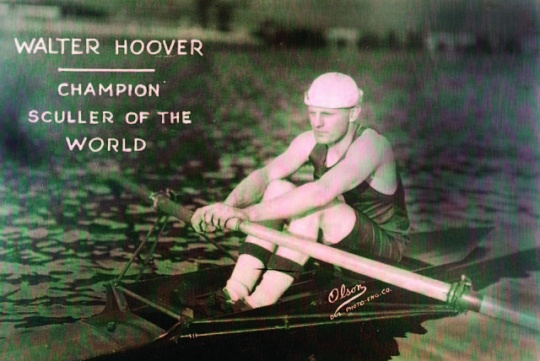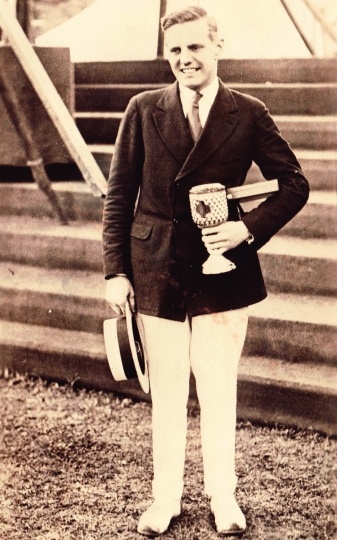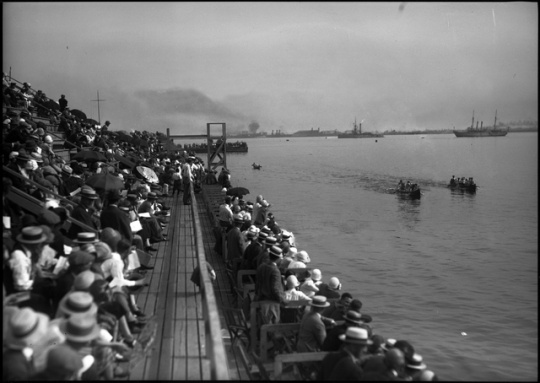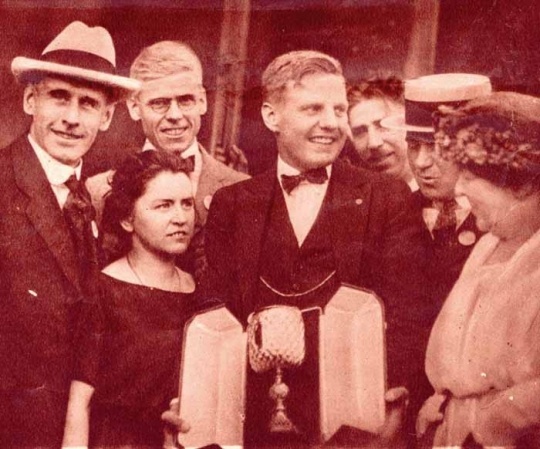Walter Hoover was a competitive rower and rowing coach from Duluth who became world famous by winning the Diamond Sculls at the Henley Royal Regatta in 1922. The annual event, held in England, was the world championship for single scullers (rowers who propel their boats alone) at the time.
Walter Hoover was born in Duluth, Minnesota, to Harriet and George Hoover. His father died when he was very young and he was raised by his mother, who was an educator and became a principal in the Duluth School District.
Hoover joined the Duluth Boat Club as a swimmer, but switched to rowing in 1913, at the age of eighteen. In his first year of rowing he was a member of the junior eight that finished first at the Northwestern International Rowing Association (NWIRA) regatta in St. Paul. The same crew went on to win the intermediate eight at the US National Championships in Boston and they beat their own senior eight from Duluth in the Senior Eight finals.
In 1914, Hoover took up sculling and won the junior and senior singles events at the NWIRA regatta in Kenora Ontario. In 1914, he also rowed in the winning senior 8 at the national championships in Philadelphia.
Hoover again won the senior single at the 1915 NWIRA in Winnipeg, along with the single quarter-mile dash. He went on to win the quarter-mile dash at the National Championship Regatta in Springfield, Massachusetts.
In 1916, Hoover was a private in the Third Minnesota Infantry National Guard, which was called up to pursue the Mexican revolutionary leader Poncho Villa on the Mexican border. The military was also part of Hoover’s life in 1917, when he was drafted into the army and served as a second lieutenant in the Thirty-third Artillery.
In 1920, Hoover did not compete in rowing competitions. Instead, he worked as a civil engineer and designed a racing shell (boat) that would he would later use to win the world championship.
At the 1921 National Championships in Buffalo, Hoover won the intermediate single, the senior single, and the quarter-mile dash, which caught the attention of the rowing world.
In 1922, Hoover easily won the Philadelphia Gold Challenge Cup (the single sculls championship trophy) by over two lengths of open water and setting a course record by 11 seconds. He sailed the next day to England to compete for the Diamond Sculls at the Henley Royal Regatta. Hoover easily won his two heats, including a victory over A. Baynes, the undefeated Australian sculling champion.
In the finals, Hoover beat the famous English sculler Jack Beresford by the huge margin of 29 4/5 seconds and immediately became world famous. When he returned to New York he received an enormous welcome both at the docks and at City Hall. When Hoover finally got back to Duluth, the celebration in his honor was the largest party in the city’s history (it remains so in 2019).
During 1926, Hoover rowed and was head coach at the Undine Barge Club in Philadelphia, where his rowers won forty-three races. He personally won the championship single and single dash at the US National Championship Regatta in Philadelphia and the championship single, the double, and the single dash at the Canadian Henley Regatta in St. Catherines, Ontario. After 1928, Hoover retired as a competitive rower.
Hoover later moved to Detroit, where he coached rowers from the Detroit Boat Club. In 1956, his Detroit oarsmen won the straight four and double events at the US Olympic trials. Hoover was then made the US Olympic rowing team’s small boats coach. The five teams that he coached won one bronze medal, two silver medals, and two gold medals at the 1956 Olympics in Melbourne, Australia.
After Detroit, Hoover retired from coaching until 1978, when he led the Minneapolis Rowing Club. In 1979, he was the women’s crew coach at Kansas State University. 1982 saw Hoover working on the design of new rowing shells. He died in 1984, at the age of eighty-nine.








